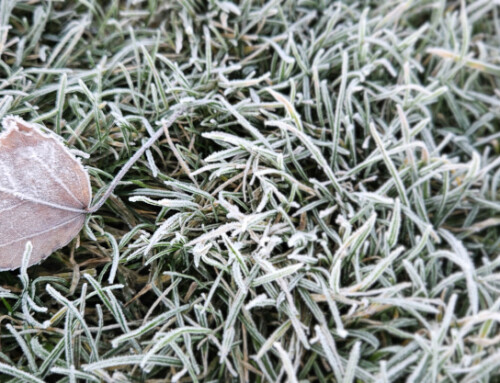Although we’re officially only halfway through autumn, the weather we’ve experienced in the last couple of weeks has felt decidedly like winter. And, if long-range forecasters are correct, this could be just the beginning of another long winter here in the Pacific Northwest. This month, take some time to wrap up the last of your yard projects for the season and prepare your lawn and garden for the wintry weather ahead.
First, now is the time to put your yard to bed for the season. With several nights of frost, your lawn will drastically slow down the growth above-ground to direct its energy into building strong roots. Throughout this month, rake your lawn as needed to prevent a build-up of leaves, keeping in mind that leaves left to lay on your lawn for extended periods can smother your grass and harbor insects and diseases as they rot.
To save yourself the effort of raking, mowing over leaves with a mulching attachment on your mower can grind up fallen leaves and speed their decomposition, preventing them from choking out grass and adding nutrients to the soil. This is easiest to do in dry weather, though, so watch the weather forecast when planning your yard clean-up! If you have evergreen trees that have dropped needles or dead foliage in the windy weather, it’s best to remove them from your lawn with raking or mowing as the acidity of fallen evergreen foliage can exacerbate moss issues later this winter or next spring.
Once you’re done with cleaning up leaves later this month, take time for one last pass over the lawn with your mower. If you typically keep your grass short, keep your mower at the same height as usual for this last mowing. If, however, you do tend to mow your lawn fairly long through the spring or summer, mowing slightly shorter for the last mowing can reduce the chances of grass molding under a blanket of snow.
If you haven’t yet fertilized your yard one last time for winter, it’s not too late; in fact, feeding your lawn sometime in the next few weeks will allow your turf to take up the nutrients and store them for spring without having to use up the food for growing above-ground yet this fall.
Next, turn your focus to cleaning up your flowerbeds. By now, most perennials and deciduous shrubs have lost their leaves or will soon. Clean up dead foliage around the base of your plants to prevent slugs and other pests from overwintering in your flowerbeds. Also, prune your rose bushes back halfway to reduce the amount of “sail” in a windstorm and prevent broken branches. And finally, add a fresh layer of bark mulch to help to insulate any tender plants you may have in the ground and prevent weeds from growing through our wet winter.
Finally, show your garden tools a little love. You’ve gotten a full year’s worth of work out of that pruner, rake and your shovels—now show them some appreciation. Before you put your tools away for winter, give them a good cleaning, oil them to prevent rust and sharpen your tools as needed. For pruners, use a sharpening stone to keep the blade razor-sharp; shovels are best sharpened with a bastard file to keep a good edge. Next spring, when yard work beckons once again, you’ll thank yourself for the effort to keep your tools in good working order!
Enjoy the change of pace in gardening as your work outdoors—at least when it comes to playing in the dirt—draws to a close once again.







Thank you got the continued great tips. I love reading your newsletters!
Thank you, Shawna!